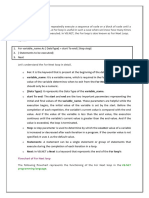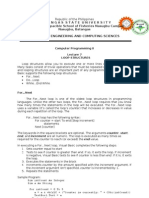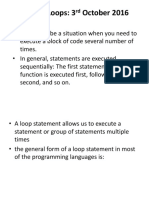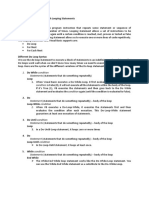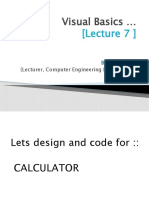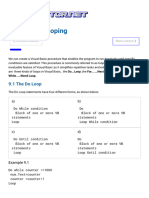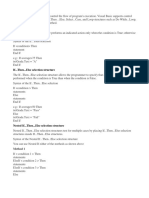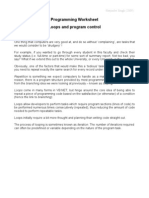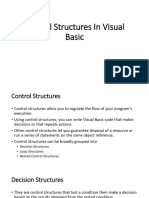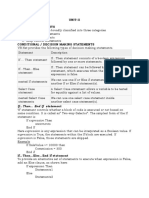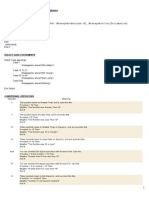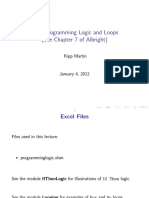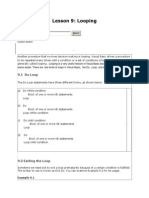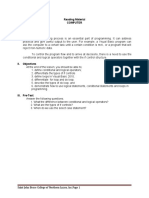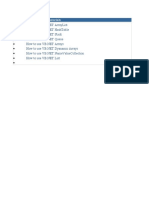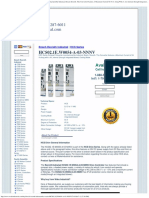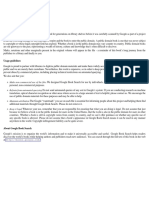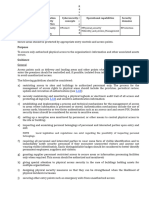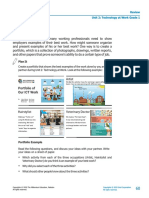0% found this document useful (0 votes)
187 views16 pages3 - Program Flow Control
The document discusses various program flow control techniques in VB.NET, including IF/ELSE statements, FOR/NEXT loops, FOR EACH loops, and WHILE loops. It provides examples of how to use each with sample code and explanations.
Uploaded by
Jyotishalok SaxenaCopyright
© © All Rights Reserved
We take content rights seriously. If you suspect this is your content, claim it here.
Available Formats
Download as DOCX, PDF, TXT or read online on Scribd
0% found this document useful (0 votes)
187 views16 pages3 - Program Flow Control
The document discusses various program flow control techniques in VB.NET, including IF/ELSE statements, FOR/NEXT loops, FOR EACH loops, and WHILE loops. It provides examples of how to use each with sample code and explanations.
Uploaded by
Jyotishalok SaxenaCopyright
© © All Rights Reserved
We take content rights seriously. If you suspect this is your content, claim it here.
Available Formats
Download as DOCX, PDF, TXT or read online on Scribd
/ 16

